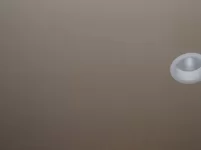We had a home built 6 months ago in Wisconsin. I’ve never lived in a home that had thin coat plaster, so I’m trying to get some opinions if I’m being overly critical about the plaster while our 1 year home warranty is still valid. Overall to me the plaster work looks good with normal daylight lighting and most nighttime lights, however when brighter lights hit the ceilings at an angle I can see where some of the seams are. It almost appears the sharper the lighting angle the more visible these areas/shadows appear. Running your hand across an area you can feel a slight ridge.
[FONT="]
Am I being overly critical, or can/should these areas be touched up and repainted? I would assume it would not take a plasterer long to hit these areas again and have the painter blends things in, although I don’t want to make things any worse. I’m assuming our builder will push back saying these flaws are normal and why I’m trying to get some opinions since I have no experience with plaster.[/FONT]
[FONT="]
Am I being overly critical, or can/should these areas be touched up and repainted? I would assume it would not take a plasterer long to hit these areas again and have the painter blends things in, although I don’t want to make things any worse. I’m assuming our builder will push back saying these flaws are normal and why I’m trying to get some opinions since I have no experience with plaster.[/FONT]

